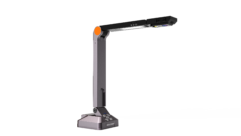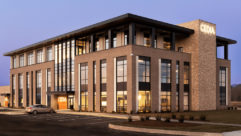

What Math Can Teach Us About AV
I’ve been spending a lot of time with Julia and Mandelbrot lately, trying to understand what they’re saying to me. I think I know, but I’m still wrestling with it.
I’ve been spending a lot of time with Julia and Mandelbrot lately, trying to understand what they’re saying to me. I think I know, but I’m still wrestling with it. You see, I’m fascinated by numbers and mathematics. Part of it is an occupational hazard–there is, after all, a certain amount of mathematics I must know and practice in order to do my job. I don’t have to know as much as mathematicians or physicists, but I still enjoy following developments in the field. I also like playing with numbers.
Thom Mullins, CTS
Some people would call it recreational mathematics (most might call it lunacy). Either way, I’ve been spending time with programs that generate fractal images based on Mandelbrot and Julia sets, and catching up with some of the basic ideas behind fractals. Who would have thought that such beauty could come from such chaos; that such order and symmetry could be found in such random expressions?
One thing led to another and I found myself thinking about divergent and convergent series in calculus. It was a seemingly random link, but it got me to rethink “convergence” in the context of our industry.
Most of the time, we tend to think of convergence as it pertains to a particular technology. Network cabling, for instance, or digital signal processing, or control interfaces. Each of these, however, represents a material means of convergence.
But I think convergence has little to do with the technology and a lot to do with the ideas. Let me try to explain.
Converging on Convergence
For a number of years, our notion of convergence related to the “single-wire solution.” We saw everything in terms of how we could get a signal–audio, video, control, data–onto a single wire. We were hammers looking for nails.
Along the way, however, our idea of convergence grew transmogrified to include digital signal processing and computers. How could we represent the analog world we lived in as a series of 1s and 0s? We’ve made stops along the way to explore control interfaces, image resolution, and other hot items of the day. And we’ve had to learn to play well with others, for there are those who do not share our passion. Right now, we’re all trying to converge on this thing called “green,” which may lead us to other areas of convergence.
Convergence is the act of moving towards union or uniformity. In mathematics, it is the process of approaching some limiting value, which is where I ended up in my musings on Mandelbrot, Julia, and our industry.
We’ve been trying to bend technologies together towards a given outcome, or series of outcomes. We’ve been trying to forge uniformity out of what is essentially a messy, chaotic world of audiovisual systems. Knowingly or not, we’ve been moving toward some limiting values. And not just numeric values, but a set of values that could be represented or modeled by complex and chaotic mathematics.
Remember quadratic equations, where the solutions could yield real or imaginary roots? Think of those as convergence points. Mandelbrot and Julia sets have real and imaginary attractors, or convergence points, in their solutions. What are the convergence points for our industry? If they aren’t the technology, what are they? What do they represent? I don’t think we’re heading for a limiting value. I think we’re heading toward an open doorway that could lead to other discoveries.
In fact, our desire for convergence is actually a desire to achieve a set of values that (we hope) technology can help us to attain. In no particular order, I believe we’re converging on the following ideas, among others:
Intuitive use. While we were trying to understand human factors for intuitive use of control system interfaces, Apple came out with the iPhone. It has become the epitome of technology that responds intuitively to our desires, and it will continue to drive our research in control for the foreseeable future.
Instant access. We’re an impatient bunch, however, the drive for immediate access to information and entertainment allows us to function in a world in which we increasingly feel out of control and powerless. It shortens the time between asking the question and having the answer. Being at the right place at the right time with the right answer gives you tremendous power and control.
Cooperative functionality. For a long time we’ve tried integrating audio, video, and control into a single system. It is only recently that we started to see manufacturers successfully implement this level of cooperative functionality in a single device. Two recent, good examples of this are Extron’s MPX Plus 866A and Tandberg’s C90 codec.
Relational interaction. Say what? Here I’m talking about the desire to be somewhere, or be perceived as being somewhere, even when you’re not. It’s communication on a very basic level; interaction directly with another person. It’s been promised by technologists but rarely delivered. Think telepresence. We’re getting there, but don’t think for a moment the end is in sight. 3D interactive holograms, anyone?
“Strange Attractors”
This is not an exhaustive list. And as we pursue more underlying reasons for convergence, we’ll find more “strange attractors” that are the real causes–not just the symptoms–of our desire to create interactive audiovisual environments and systems.
In The Unreasonable Effectiveness of Mathematics in the Natural Sciences, Eugene Wigner wrote, “The miracle of appropriateness of the language of mathematics for the formulation of the laws of physics is a wonderful gift which we neither understand nor deserve. We should be grateful for it, and hope that it will remain valid for future research, and that it will extend, for better or for worse, to our pleasure even though perhaps also to our bafflement, to wide branches of learning.”
Sometimes, the convergence we’re seeking, instead of being a limiting value, becomes a portal to other areas we haven’t yet imagined.
Thom Mullins is senior consultant with BRC Acoustics & Technology Consulting in Seattle.










